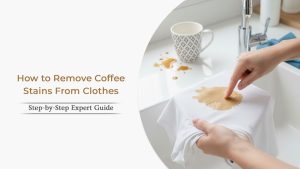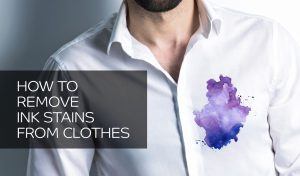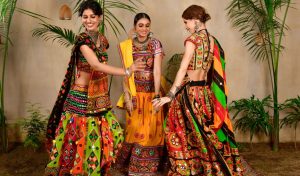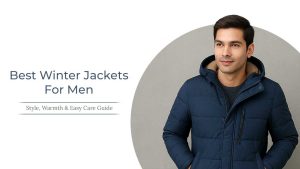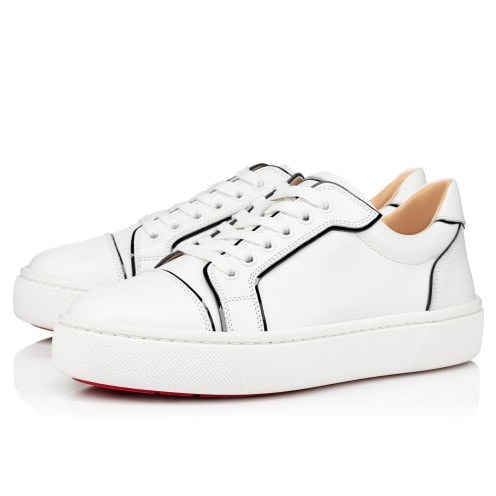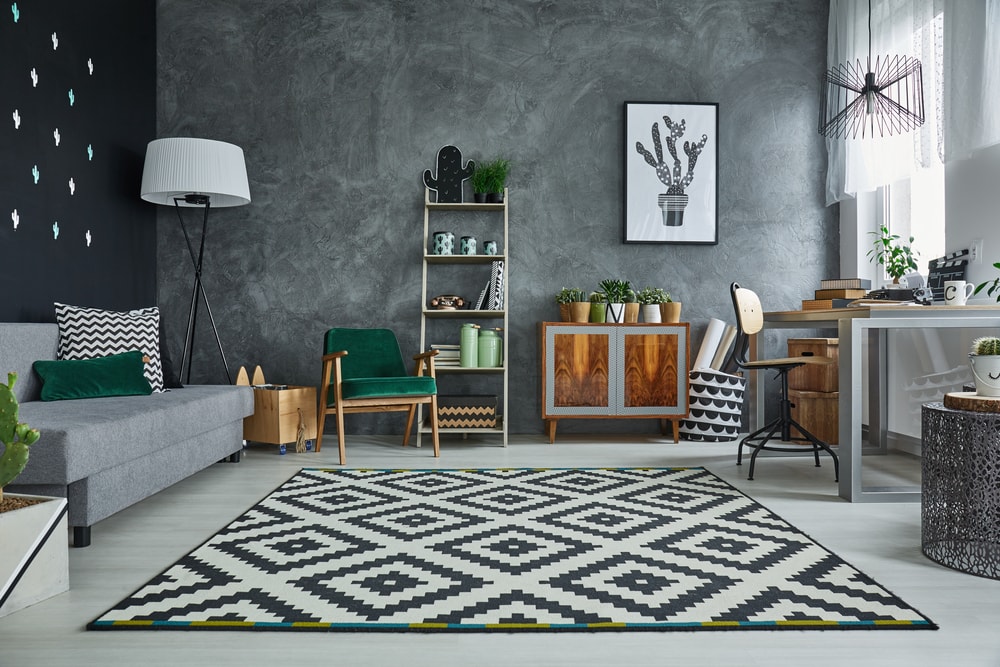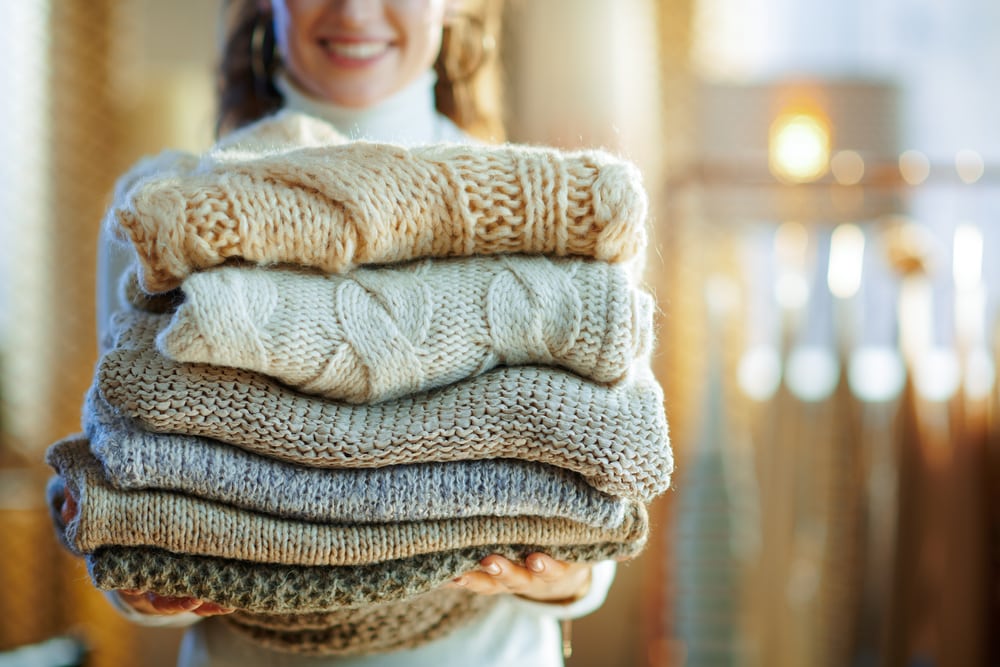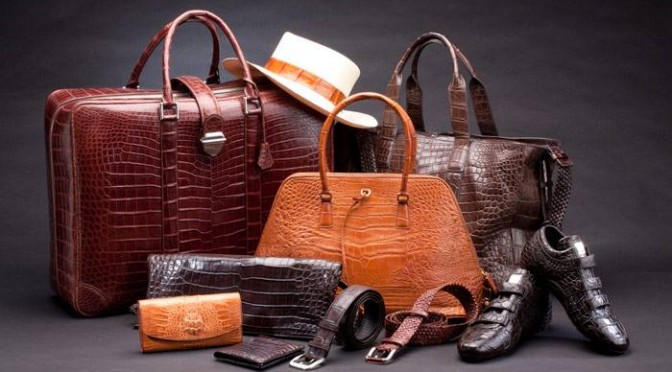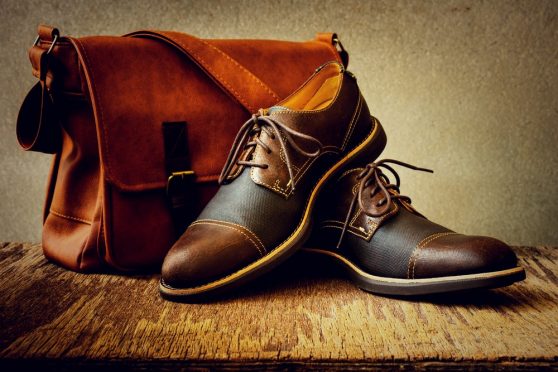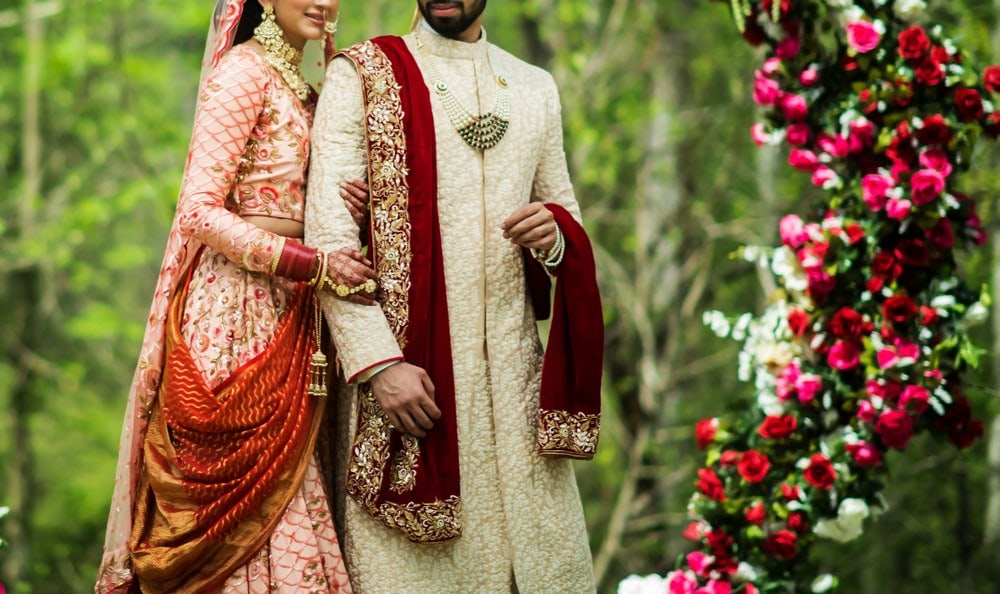Uttar Pradesh is popular worldwide for its rich...
Read More- Blogs
- Dry Cleaning
- What Is Lycra Fabric: Properties, How Its Made And Where?
What Is Lycra Fabric: Properties, How Its Made And Where?
- Riya Yadav
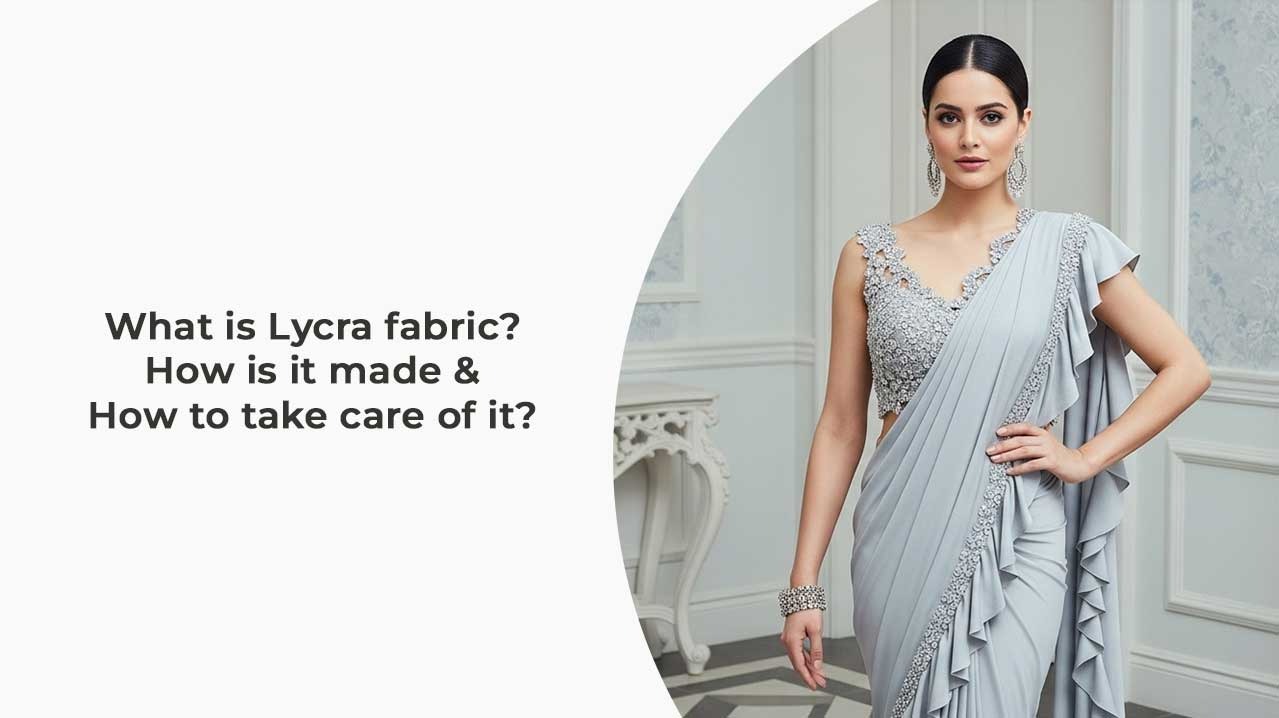
Table of Contents
You often see stretchy leggings and body-hugging dresses made of Lycra fabric. And with the recent advancement in fashion technology, performance sportswear also uses Lycra. But, what is lycra fabric and why is it gaining fame in the sportswear industry? Well, Lycra is a synthetic fiber known for its remarkable elasticity, allowing it to stretch several times its length and still regain its original shape. Now, it won’t be worn alone as it is blended with other fibers like cotton, polyester, or nylon to make the fiber more comfortable and durable.
Given the versatility of Lycra, it is used in activewear as well as medical compression garments. It gained traction after its introduction in 1958. So, everything from sporting clothes, to fashion, to healthcare, and even industrial equipment use Lycra. But that brings some questions. Is Lycra fabric good or bad for you or the environment? Does Lycra blend fabric blend offer the same performance? And the most important, what is Lycra fabric used for in our day to day life.
In this guide, we’ll go over the properties of Lycra, its production process, the pros and cons, and how to care for it.
What Is Lycra Fabric?
When people ask, “what is Lycra fabric?” The simplest answer is that it is a synthetic elastic fiber like spandex or elastane, famous for its stretch and recovery.
Technically, Lycra is the brand name owned by The Lycra Company, but the fiber is the same as spandex in the United States or it’s called elastane in Europe and other regions. No matter what name you use, the performance characteristics are identical. In the name of simplicity, all of them can be put under a common name of “Lycra”.
Lycra was invented in 1958 by chemist Joseph Shivers at DuPont. During that time, the textile industry relied heavily on rubber for stretching, but rubber had limitations of its own. It was heavy, less durable, and degraded a lot and fast. The invention of Lycra changed the game forever. Unlike rubber, it was lightweight, more durable, and it was far more flexible, being able to stretch five to eight times its original length before snapping back to its shape.
Lycra vs. Spandex vs. Elastane
Disregarding the common perception, the difference between the three of them is so minute that you might think it’s the same:
Lycra – A trademarked brand name.
Spandex – Generic term used mainly in the U.S.
Elastane – Generic international name.
If you are wondering about whether is Lycra fabric good or bad, it is important to remember that Lycra is almost always blended with other fabrics like cotton, polyester, and sometimes even nylon. This fusion improves its comfort, stretch, and durability.
Key Characteristics
- Amazing elasticity – Allow stretching with no permanent alteration.
- Feeling lightweight – Can be worn for an extended period.
- Durability – Resistant to abrasion as well as wearing.
- Shape retention – Able to withstand changing of shape.
Due to the above features, Lycra has a wide range of applications. That is the reason answering the question what is Lycra fabric used for opens a range of answers such as sportswear, swimwear, lingerie, medical compression garments and even industrial textiles.
Want a professional leather dry cleaning?
Why Is It Lycra Popular?
Lycra clothing has the feature of contouring to the wearer’s body, ensuring a body-hugging yet pleasant fit. As such, it gives support and freedom of movement with ease in athletic wear. In clothing, it shapes the body effortlessly without drooping or creasing.
As for whether Lycra blend fabric is good or bad, in general, blends tend to enhance the comfort and wearability of the fabric. For instance, a cotton-Lycra blend maintains the comfort of cotton while adding the stretchy recovery of Lycra and is therefore ideal for casual clothing.
In short, no doubt, it is Lycra fabric which is revolutionizing the textile world. A fiber that integrates technical and comfort, enhances the appearance, fit, and durability of garments. It could be your gym leggings or your favorite skinny jeans, Lycra is the unseen champion that maintains their shape.
Properties of Lycra Fabric
Understanding why Lycra fabric became so popular is simple when you consider its features. Its use in several items like leggings, yoga pants, and even in medicine speaks volumes to the diverse nature Lycra fabric can adapt to.
1. Exceptional Elasticity
The feature that uses Lycra fabric stands out, its elasticity is the key. The stretching along the fabric can be five to eight times its original length and still secure its former shape. The retention vastly increases the longevity of the garments, especially in sportswear where accumulating wear and tear is a common issue, Lycra fabric helps fortify to a snug and comfy fit.
2. Lightweight Comfort
Lightweight yet incredibly strong, this statement truly sums up the qualities of Lycra. This feature especially comes in handy when considering leggings, yoga pants or even swimsuits. Garments designed for leisure, and sports now became easier to use and coupled with cotton or polyester became even more efficient.
3. Durability
The answer to the question ““is Lycra fabric good or bad?” also hinges on its durability. Lycra fabric is more resistant to damage than natural elastic materials such as rubber. It retains its stretching capability even after repeated washing for years. This makes it more suitable for uniforms and for clothes which are used on a daily basis like athletic clothes.
4. Wrinkle Resistance
Garments made of Lycra do not crease or accumulate wrinkles, remains smooth even after prolonged wearing. This makes Lycra especially helpful for travel garments and work clothes, which need to look polished and professional during and after wear but not require frequent steaming or pressing.
5. Shape Retention
Due to its elasticity, Lycra blended fabrics withstand shape distortion far better than non stretch fabrics. For instance, skinny jeans made of Lycra will continue to fit and mold according to your body shape even after several uses, unlike jeans made from 100% cotton which lose shape easily.
6. Moisture Management
While Lycra does not have a high absorbency rate, when blended with polyester, a fiber that easily wicks moisture. It helps in the pulling away of sweat from the body. This ensures that the wearer remains dry and comfortable during exercise. This is a big reason why Lycra fabric is used, especially in clothing designed for physical activities and even school sports uniforms.
7. Color Retention
Due to its ability to accept dyes readily, colors are retained even after several washes. This explains why bright swimsuits and leggings lose their colors with wear.
8. Flexibility in Blends
An important benefit and a major consideration in determining the advantages or disadvantages of a Lycra blend garment is the degree to which it synergizes with other fibers. Blends with cotton maintain the strength of cotton and also add to its elasticity.
For example, wool-lycra blends enhance the comfort as well as the fit of knitwear, while polyester-lycra blends are useful in the making of long-lasting, non-wrinkle activewear.
9. Resistance to pilling and Abrasion
Some fabrics suffer greatly from pilling, developing small balls of fibers over time, but Lycra as well as spandex fabrics are far more resistant to this as well as surface wear, remaining newer looking longer.
10. Potential Allergic Reaction
For most, the addition of Lycra does not cause skin irritation, however it can be a problem for a small number of people who may be allergic to it. This appears to be the major question for most people is, Lycra fabric is good or bad for personal wear?
Don’t have time to remove stains?
How Lycra Fabric Is Made?
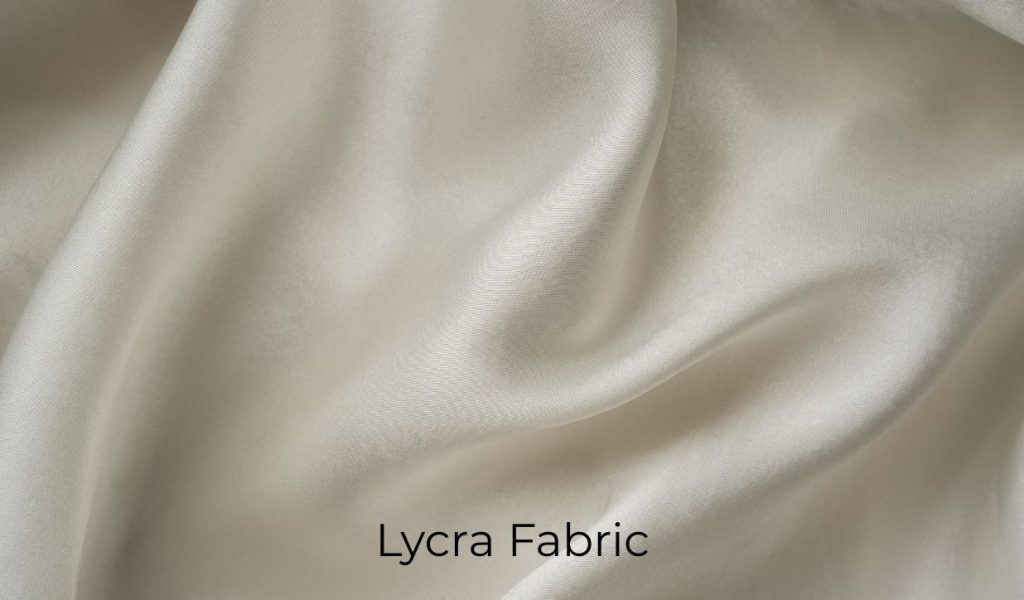
The process of developing lycra fabric is integrating sophisticated chemical reactions with textile technology, starting with polymers based on polyurethane which are petrochemical derivatives. Lyrca fabrics are polymers which have a specific arrangement that enables them to have unique features such as their ability to be stretched and pulled then revert back to their original state.
The process begins with polymerization where diisocyanates and macroglycols are mixed to make a polyurethane prepolymer which is then mixed with a solvent to form a thick liquid.
As the strands emerge from the heated chamber, the solution undergoes an evaporative process which leaves behind solid elastic fibers. These fibers are stretched or “drawn” which aligns the polymer molecules, thereby increasing recovery and elastic properties.
Lycra is almost never worn on its own, which is why it is called a blend fabric. Other fibers are put to use while blending, for example, cotton, polyester, and nylon. Cotton blend makes the fabric softer and breathable while polyester makes it durable. Lycra blend makes it smoother and supportive. The versatility is the reason why Lycra fabrics are used for sportswear, lingerie, and even medical garments.
After the blending process, the next step is to dye and finish the fabric followed by a quality check. The tested parameters include recovery, stretch capacity, durability, and colorfastness. This explains why Lycra is a top choice when it comes to comfort and flexibility. On the other hand, while the statement “Lycra fabrics are good” might be true, its environmental impact is substantial.
Flat 20% off on 1st order-
schedule free pick up
Where Is Lycra Fabric Used?
Searching for what is Lycra fabric, most users come to know that it is not a fabric by itself, but a very elastic fiber which is mixed with other materials to enhance stretching, fitting, and comfort. Because of these benefits, Lycra can be found in a wide array of products such as sports and swimwear, medical garments, and even in some industrial products. Certainly, its adaptation to new uses is what has made it a staple in contemporary textiles.
Sportswear and Activewear
If you have ever used high active leggings, compression shorts, or fitted sports tops, you know what is Lycra fabric used for in the athletics realm. With Lycra, stretching is done effortlessly, and with some light compression, muscle vigor and circulation is significantly improved. It is common to find polyester-Lycra blends in activewear, as it possesses moisture-wicking capabilities and stretch durability. For athletes, this is a prime example of why Lycra fabric is good for performance wear.
Swimwear
Within swimwear, Lycra blend fabric is of utmost importance. The combination of nylon and Lycra blends results in a sleek, smooth, and contoured appearance. They do not sag even when submerged in water. The material’s ability to “snap back” after being stretched is very beneficial in helping women’s swimsuits retain their youthful appearance with regular use. Undoubtedly, critics mentioning environmental issues related to the use of synthetics may have a point, but from a functionality and comfort perspective, most athletes, and swimmers in particular, would agree that Lycra blend fabric is good in this setting.
Undergarments and Lingerie
With everyday underwear and bras to shape lingerie, Lycra ensures these garments remain comfortable and shapely even after multiple washes. The recovery and stretch properties creates a continual dimension that makes intimate wear appealing to consumers, and makes Lycra blend fabrics a top choice.
Fashion and Everyday Wear
Bodycon dresses, fitted tops, and even skinny jeans make use of cotton-lycra blend fabrics to achieve softness and stretch. This goes to show what is Lycra fabric used for & is incorporated into everyday wear. Not only do the garments soften but the stretch enhances the fabric allowing the clothes to follow the body in a smooth silhouette.
Instead of movement being a restriction, it becomes a luxury. Debate around the acquisition of Lycra often raises the question as to whether it is good or bad. Skeptics that wish to be heard often mention the environmental impact of Lycra due to being of synthetic origin.
Medical and Compression Garments
With post-surgical garments, orthopedic supports, and compression stockings, Lycra’s buoyant properties make these items indispensable. These garments utilize Lycra blend fabrics for their positive health effects, like reducing swelling and improved circulation, as well as supporting recovery.
Costumes and Performance Wear
Dance costumes and movie superhero costumes are made from Lycra for its stretchable and colorful qualities. This highlights why Lycra fabric is used in the entertainment industry.
Specialty and Industrial Uses
Lycra is also found in clothing like fitted furniture and elastic straps, and is even used in some automotive interiors where flexibility is required.
Lycra Fabric: Good or Bad?
Questions about whether Lycra is a good or bad fabric choice , especially in regard to clothing and the environment, come to mind. The reasoning to this question, whether Lycra fabric is good or not – and by extension Lycra blend fabric – is, yes and no. This depends on the weighing of pros and cons and what one considers balanced.
Why Lycra Fabric Is Good:
When exploring Lycra fabric is good or bad, Lycra is known for its remarkable recovery, stretch, and comfort. It permits close fitting of garments, especially for sports apparel, swimwear, lingerie, and even medical compression garments. Lycra also adds flexibility to cotton, durability to polyester and sleekness to nylon, thus explaining why is Lycra fabric used in daily wear. Moreover, it improves shape retention of garments, allowing them to last longer and reducing replacement frequency.
Why Lycra Fabric May Be Considered Bad:
Issues with microfibers are of growing concern. Lycra, like other synthetic fibers and petroleum products, is not biodegradable. This means that its production and degradation poses problems. Along with energy, chemical solvents are required for production, which releases toxic microplastics. Alongside microplastics, washing it also contributes to landfill waste. Furthermore, due to chemical Lycra blends, recycling is near impossible due to difficulty isolating fibers.
Examining the pros and cons it is clear that prioritizing matters the most, especially when it comes to its comfort and performance. Although, due to its construction, issues of sustainability do arise. Whichever Lycra alternative is eco-friendly, spending less, washing, and buying long lasting durable products do help conscious consumers mitigate its concerns.
Caring for Lycra Fabric
Maintenance of Stretch, Color, and Shape, Which also Reduces Environmental Impact. Alongside reducing environmental impact, longevity is key. While pure Lycra is easy to maintain, blends are not. Overall, proper maintenance is key to long term sustainability.
Washing Tips:
Overall, for long term durability along with the maintenance and longevity of blends, proper washing is key. With a mix of lukewarm water, a gentle cycle of washing, and non abrasive detergents along with air drying not only helps the structure of the garment, but also its fibers. Avoiding harsh washing in the detergents or lukewarm water are equally as damaging as hot water.
To manage microplastic release part of the debate on whether Lycra fabric is good or bad, think about using a microfiber-catching laundry bag.
Drying:
Heat can permanently damage the stretch and shape of Lycra garments, so avoid tumble-drying. Instead, air dry items by laying them flat or hanging them, avoiding direct sunlight. This prevents bright colored swimwear or activewear from color fade.
Ironing and Storage: Most items made of Lycra and its blends don’t need ironing. If they do, use low heat and place a cloth over the garment. To keep shape, store Lycra clothes either folded or hung on padded hangers.
Longevity Tip:
Wearing garments in rotation maximizes the performance benefits of Lycra, as the elastic fibers need time to recover after each use.
Properly maintaining Lycra clothing not only increases its lifespan and reduces the need to replace clothes, but also shifts the debate to good by balancing the conversation on waste reduction and durability.
Professional Dry Cleaning Services
The safest option continues to be air drying, however, some Lycra garments may be tumble dried on low or delicate settings to hasten drying without damaging the fibers. With regard to items composed of Lycra or Lycra blended fabrics, care practices related to the drying process are equally as vital as those related to washing. Air drying is the best method to retain its shape, but some types of Lycra garments can be safely tumble dried on low or delicate heat settings.
Always refer to the care label for guidance, as the delicate fibers can be damaged by excessive heat, which compromises its ability to hold shape. Specialized and performance garments are best cleaned professionally, as the specialized care helps manage the delicate balance of friction which can lead to wear and tear. Professional stretch fabric cleaners help retain the garment fit, flexibility and colors, extending its life. Such practices in drying and cleaning garments reinforce the argument supporting the debate: Lycra fabric is good, not bad.
Conclusion
This final section attempts to rehash the objectives and processes that were to be undertaken in the previous sections and as we have seen, Lycra fabric, as close as it can be, stays in the shape of the body allowing the wearer to move gracefully and easily.
With features like elasticity, stretch, longevity, and resilience, it is extensively used in sportswear, swimsuits, lingerie, fashion, and even in medical garments. Whether incorporated solely or used as a blend, it adds to comfort, temperature, fit, and motive. Hence, its popularity cannot be understated.
The question around what is Lycra fabric & whether it’s good or bad comes to how it’s viewed. In its defense, it offers increased longevity, improvement in fit, and better range of motion in comparison to other garments. On the other hand, its environmental impact like microplastic shedding and synthetic origins raise a red flag, especially to environmentally friendly advocates. The same situation arises when considering Lycra blend fabric. While blends may be easier to wear, recycling them becomes a hassle.
Disclaimer: The opinions expressed in this article are those of the author. They do not necessarily purport to reflect the values or views of Tumbledry.
How to Remove Coffee Stains From Clothes: Step-by-Step
Cleaning curtains is not an easy task to...
Read MoreBest Ways to Clean Curtains at Home
Cleaning curtains is not an easy task to...
Read MoreHow to Remove Ink Stains From Clothes
Removing an ink stain is not only possible...
Read MoreTraditional Dress Of Gujarat: History, Fabrics & Care
Many of us have been to Gujarat and...
Read MoreBest Laundry Basket Tips from Tumbledry Experts: Save
In this new blog, we are here with...
Read MoreDifferent Types Of Sarees You Can Wear On
Sarees are all time favorite for women, whether...
Read MoreTop Branded Handbags For Ladies With Their Maintenance
In India, women are looking for both accessories...
Read MoreHow To Wash Rugs For Living Room For
This diwali, if you are also concern of...
Read MoreBest Winter Jackets For Men: Style, Warmth &
In winters, jackets for men are significant parts...
Read More
